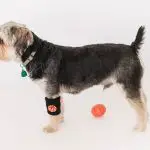Shetland sheepdog puppy and dog information
The Shetland Sheepdog is a very popular dog because of her beauty and willingness to please. She is very trainable and makes a good watch dog. She can be kept in an apartment if she can get frequent long walks. She is generally good with other pets and dogs. She loves older children, especially if she has been raised with them. As a reminder, never leave a child unsupervised with a puppy or dog.
*Approximate Adult Size. The approximate adult size (two years old or older) of the Shetland Sheepdog is 13 to 16 inches to the withers (highest point of the shoulder) and 14 to 27 pounds.
*Special Health Considerations. Most dog breeds have certain inherited health problems associated with that specific breed and the Shetland Sheepdog is no exception. Be on the look out for epilepsy, eye problems, skin problems, bleeding disorders and Canine Hip Dysplasia (genetic based looseness in the hip joint that can lead to arthritis pain and lameness). This disease list is an informative guideline only. Other diseases may also be significant threats, please contact your veterinarian for a complete list.
She should visit the veterinarian several times in the first year for shots, boosters and check up. Then, as an adult, she should visit the veterinarian yearly for shots and check up. As she gets older, six years and on, she should visit the veterinarian twice a year for check ups and shots. Remember; avoid feeding your dog sweets.
*Grooming. The Shetland Sheepdog has a double coat. The inner coat is short, furry and thick. The outer coat is straight, long, harsh hair. She should be brushed regularly. Brushing will help her maintain a clean and healthy coat, avoid mats, help you keep a closer eye on her health and strengthen your emotional bond with her.
Her teeth should be brushed at least twice a week with toothpaste and toothbrush designed for dogs. Brushing removes the accumulation of plaque and tartar which can cause cavities (rarely) and periodontal disease. Dog periodontal disease can lead to pain, loss of teeth, bad breath and other serious disease.
Her toenails may need to be examined for growth and clipped regularly. The toenails of the rear feet grow slower than the toenails of the front feet.
*Life Span. The Shetland Sheepdog can live between 12 and 14 years with proper nutrition, medical care and excellent living conditions.
*History. The Shetland Sheepdog is from Great Britain where they were used to guard and herd sheep. They were first registered by the American Kennel Association in 1911.
Some Registries: *American Shetland Sheepdog Association *UKC United Kennel Club *NKC National Kennel Club *CKC Continental Kennel Club *APRI Americas Pet Registry Inc. *AKC American Kennel Club *FCI Federation Cynologique Internationale *NZKC New Zealand Kennel Club *KCGB = Kennel Club of Great Britain *ANKC = Australian National Kennel Club *ACR = American Canine Registry
Litter Size: 4 to 6 Shetland Sheepdog puppies
Category: Herding
Terms To Describe: Loyal, responsive, affectionate, intelligent,
*SPECIAL GOOD POINTS They keep themselves clean. Makes a good watch dog. Very popular breed. Eager to please. Very trainable.
*SPECIAL BAD POINTS Makes a poor guard dog. Sheds heavily. Can be a barker.
*Other Names Known By: Sheltie,
*Every dog is an individual so not everything in this information may be correct for your dog. This information is meant as a good faith guideline only.


